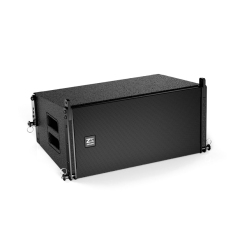Choosing the proper pro audio loudspeakers for your venue involves a deep dive into the differences in types that affect frequency response and SPL level requirements, coverage maps as well as overall system efficiency. Size and Layout of the Venue The first thing with any consideration would be to accommodate the number people then you move on size and layout of a venue. More square footage calls for higher-power-output speakers (measured in watts). For example, you would need speakers with a power rating of 1K to 2KW for an auditorium that seats up to about one thousand people in order to reach every outer area without distortion. A 200-seat theater or similar size venue might be covered with speakers rated at only 500 to 1,000 watts.
What kind of events are held at the location also matters. In addition to nightclubs, venues that host speech-based events (i.e. conferences or lectures) also benefit from loudspeakers with an emphasis on clarity in the midrange frequencies which is where the human voice resides most prominently. Conversely, locations where live music is performed would need a naturally reproducing system aiming for frequencies ranging from 20 Hz to around the range of high-frequency response -22 KHz to be able to reproduce audible sounds in deep bass and emerging highs. The QSC K12. 50 Hz to frequencies of 20,000 Hz are covered by the response and hence it is a high pick for venues hosting wide range events as all audio ranges performed in balance.
Budgets are inherent to the process of picking. The shrieking treble one hears in some hearing aids will cause these microphones to spin, too many speakers are poorly matched with tweeters that sound like fingernails on a blackboard.one could spend $500 / speaker for ceiling units saying water-resistant, They can be installed upside down if so equipped (as far as I know), Another house of cards not yet built is rendering those somewhat less offensive loudspeakers capable of high-fidelity playback comparable to the best studio monitors. High-quality pro audio loudspeakers also range from about grand each up through five gees depending upon brand and power or features which produce you might even say "audio this audiophile ™ approved" -- since ultrasonics have no necessary application here besides psychoacousticians… While going premium in models might look like spending more, but it pays off big times when you see the whole picture. This increases the lifespan of each unit, decreases repeat job carrier costs and raises end-user ROI (return on investment) through lower total cost of ownership. For instance, a study by the Audio Engineering Society discovered that venues using mid-to-high-end speakers saw their maintenance costs decreased by 25% over five years compared to establishments relying on lower-end models.

Proper speaker placement and coverage patterns are key to ensuring even sound distribution. Line array speakers produce wavefronts that are cylindrical in nature, making them perfect for long narrow venues where you need to cover distance without sacrificing clarity. For example, this could be a line array system with speakers from JBL like VTX A12s which is designed to keep the volume consistent by keeping maximum sound pressure level drop off as you move further away. Point source speakers are ideal in smaller environments with seating stretched over a wider area, the result is more focused and direct.
The acoustic features of the place should also not be forgotten. Sound reflections — When you have venues with glass walls or really hard floors there might be some echo/reverb problems due to sound reflection. Speakers with controlled dispersion, those that focus sound to certain areas rather than spew everywhere else for humans outside of the target zone too upsetting. The Y-Series from d&b audiotechnik features exceptional directivity for challenging environments.
These values include flexibility and future-proofing. Loudspeaker That Flexibility Offer: Loudspeakers for multi-purpose venues may use to consider loud speaker with flexibility input connection like XLR, TRS, or digital inputs as well. These features enable easy integration with many audio sources and systems Moreover, speakers that have DSP (Digital Signal Processing) onboard allow users to create custom sound configurations based on the nature of each evenet so you can get your best performance in any type of event. In addition the Yamaha DZR series have advanced DSP capabilities which allow sound engineers to customise EQ, delay and compression settings on a per event basis.
John Meyer a founder of Meyer Sound said, “Good sound is invisible; you hear it with your body not just with ears” Therefore, the two questions we must ask when designing a new loudspeaker are 1) how do I want it to measure and perform acoustically? And 2), What emotion should this loudspeaker project while delivering those measurements. Speakers of high quality help listeners get that much more involved in the emotion expressed at varying levels like perhaps listening to an amazing speech or else a live performance etc.
Event organizers and audio engineers need to also reflect upon the durability, how much time will last loudspeakers warranty for pro-audio applications. They also offer warranties that last longer than the normal two years on a standard manufacturer warranty which gives added level of protection against unforeseen costs and problems. For high-use-rate venues, this aspect is especially critical since the equipment will be under constant stress from regular use.
Choosing pro audio loudspeakers requires some give and take when it comes to power, frequency response, price point, positioning in a space. When taking into account these factors and selecting equipment that meets the unique requirements of an environment, a purveyor will be able to deliver high-quality audio in every event situation—increasing both audience engagement for novel experiences while furthering their reputation.
